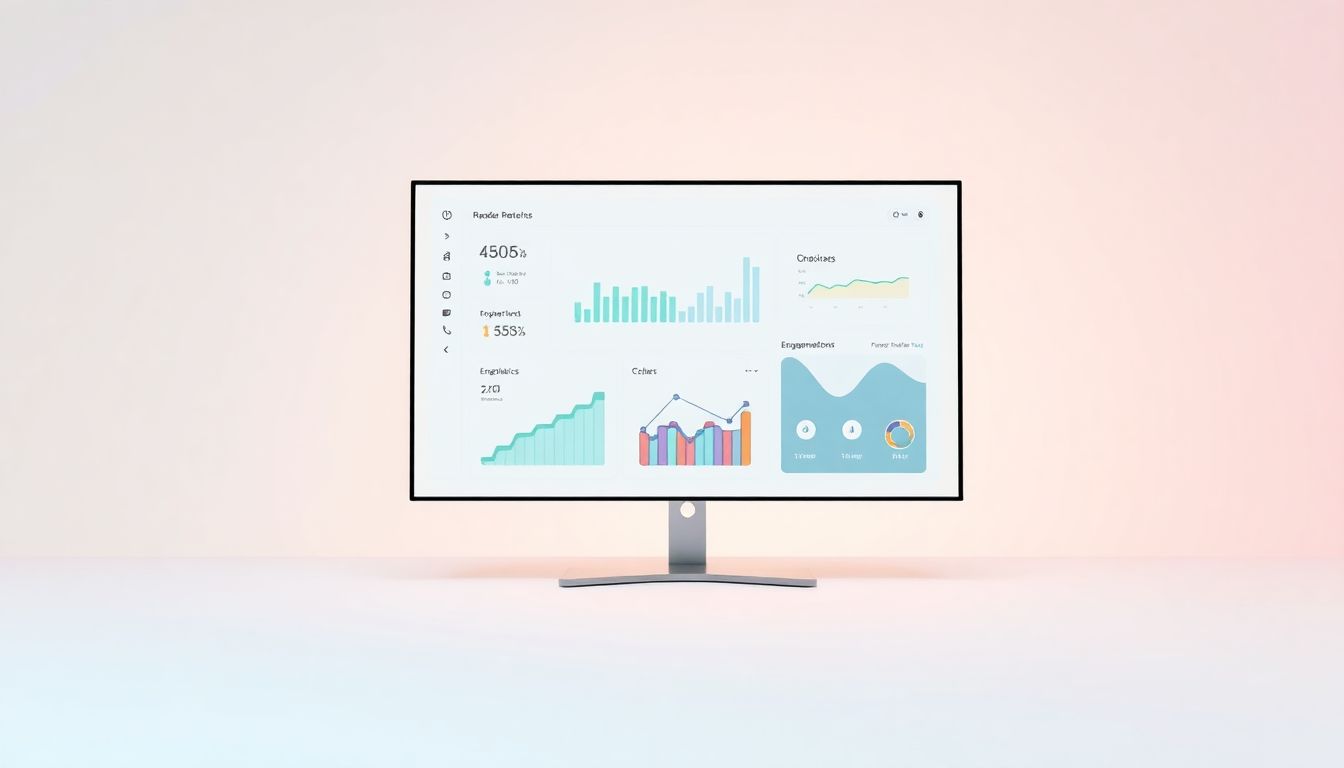If you’re trying to keep your readers hooked, chances are you wonder how well they stick around. Reader retention analytics can show you exactly that—how long people stay, what they like, and where they might lose interest. Keep reading, and I’ll show you simple ways to understand and boost how your audience engages with your content, which can save you money and help your content grow. Let’s get into what makes this all work.
Key Takeaways
Key Takeaways
- Reader retention analytics shows how long visitors stay, return, and engage with your content. It helps you identify what’s working and what needs improvement.
- Tracking metrics like time spent, repeat visits, and scroll depth tells you how interested your audience is. Low numbers indicate you may need to tweak your content.
- Boost retention by personalizing topics, detecting when users are about to leave, and customizing content for different audience segments.
- Predictive analytics can warn you before visitors leave, allowing you to send targeted messages or offers to keep them engaged.
- Use tools like Google Analytics, heatmaps, and feedback to gather insights about user behavior and improve your content strategy.
- Regularly review your data, create audience segments, and test different content styles to see what keeps readers around longer.
- Focusing on retention builds loyalty and encourages repeat visits, leading to sustained growth rather than short-term gains.
- Small improvements in retention rates can significantly increase profits, making it a smart way to grow your audience and revenue over time.

1. What Is Reader Retention Analytics
Reader retention analytics is all about measuring how well your content keeps people hooked over time. Think of it as keeping score of how long visitors stick around, how often they come back, and how engaged they are with your material.
This type of analytics tracks key signals like how much time readers spend on your pages, whether they scroll down to see more, and if they revisit your site after their first visit. Using these data points helps you see what’s working and what might need a tweak.
In short, it’s a way to understand whether your content resonates or if your audience is quickly bouncing away. And that understanding is gold because it helps you craft content that your readers actually want to stay with.
2. Why Tracking Reader Retention Matters
If you want your content strategy to work, you’ve got to know if people are sticking around. Higher retention means your audience finds your content valuable enough to keep coming back, saving you money on constantly chasing new visitors.
Plus, retention has a direct impact on your growth and revenue. For example, increasing your retention rate just a few percentage points can lead to a big boost in profits—some studies show anywhere from 25% to nearly 100%. That’s because loyal readers are more likely to buy, share, and promote your content.
And here’s the kicker: data-driven insights don’t just tell you what’s happening—they guide your decisions, helping you tweak your content and marketing tactics so you hit the sweet spot with your audience every time.
3. Key Metrics to Measure Reader Retention
To get a handle on how well you’re keeping readers engaged, start with these simple metrics:
- Time spent on content: How long does a typical visitor stay? Longer times often mean they find your content interesting and useful.
- Return visits: How often are people coming back? If your readers revisit frequently, you’re doing something right.
- Scroll depth and page views: Are they scrolling to the bottom? Seeing which parts grab attention helps you understand what works.
- Early signs of disengagement: Watching for sudden drops in activity or short visits can alert you to issues before they snowball.
These metrics provide a clear picture of engagement and can help you identify weaknesses early, so you can address them before losing your audience.

4. Simple Strategies to Boost Reader Retention
One of the easiest ways to keep readers hooked is to personalize your content based on what they care about.
Use analytics to find out which topics resonate most and serve up more of that type of content.
Detect when someone is about to leave your site — like a sudden drop in scroll depth or a short visit — and send them a friendly nudge, like a pop-up or a personalized email, to encourage them to stay longer.
Break your audience into smaller groups based on their habits or interests, then tailor your messaging to each group for better engagement.
Adjust your content style, tone, or length based on what your data shows works best, so your readers keep coming back for more.
5. How Predictive Analytics Helps Keep Readers
Imagine knowing which visitors might leave before they actually do—that’s where predictive analytics shines.
By analyzing past behaviors, you can identify patterns indicating that a user is at risk of bouncing.
Armed with this info, you can offer targeted content or special promotions to persuade them to stay longer or return later.
This method helps you craft personalized experiences that foster loyalty, rather than just reacting after the fact.
Using advanced tools, like AI-driven platforms, makes it easier to get these insights quickly, so you can act in real-time and make smarter decisions about your content and outreach efforts.
6. Tools to Use for Reader Retention Analytics
Setting up dashboards with tools like **Google Analytics** or **Mixpanel** can give you a clear view of how your audience behaves over time.
Connect these analytics platforms with your email marketing or chat systems to send targeted messages based on engagement levels.
Looking at reader feedback and sentiment analysis can also uncover hidden issues or opportunities that raw data might miss.
Implement heatmaps and scroll-tracking tools to see exactly which parts of your content are grabbing attention—and which parts are being skipped.
Investing in user-friendly dashboards and integrations makes it easier to keep an eye on key metrics without getting overwhelmed.
7. Action Steps to Improve Retention Today
Start by regularly reviewing your analytics to spot signs of declining engagement, like shorter visit durations or fewer return visits.
Group your audience into different segments—such as new visitors, loyal readers, or lapsed users—and develop content tailored for each group.
Set up automated alerts for sudden drops in key metrics so you can jump in before the situation gets worse.
Use A/B testing to try different content formats, headlines, or calls-to-action, then see which keeps your readers around longer.
Get familiar with tools that help you measure and improve engagement, like heatmaps and session recordings, to understand user behavior better.
8. Building Long-Term Growth with Reader Retention Analytics
Focusing on retention means you’re not just chasing new visitors—you’re fostering lasting relationships with your existing audience.
Analytics give you a better understanding of what your readers want, so you can serve them content that truly resonates.
Over time, this builds trust and turns casual visitors into loyal followers or customers.
Consistently analyzing your retention rates and adapting accordingly creates a steady growth pattern—not just quick wins.
In today’s data-driven world, using tools that harness AI and real-time insights is essential—especially since average retention rates hover around 70-80% in many industries [source].
Remember, improving your retention by even a few percentage points can significantly boost your profits—some estimates say by as much as 95%, making this a smart move for sustainable growth.
FAQs
Reader retention analytics tracks how long visitors stay, how often they return, and their engagement levels with your content, helping you understand what keeps readers interested and engaged over time.
Tracking retention helps reduce marketing costs, increases growth, and generates more revenue by understanding how readers interact with your content and making informed improvements.
Key metrics include time spent on content, return frequency, scroll depth, page views, and early signs of disengagement, providing insights into how well your content retains readers.
